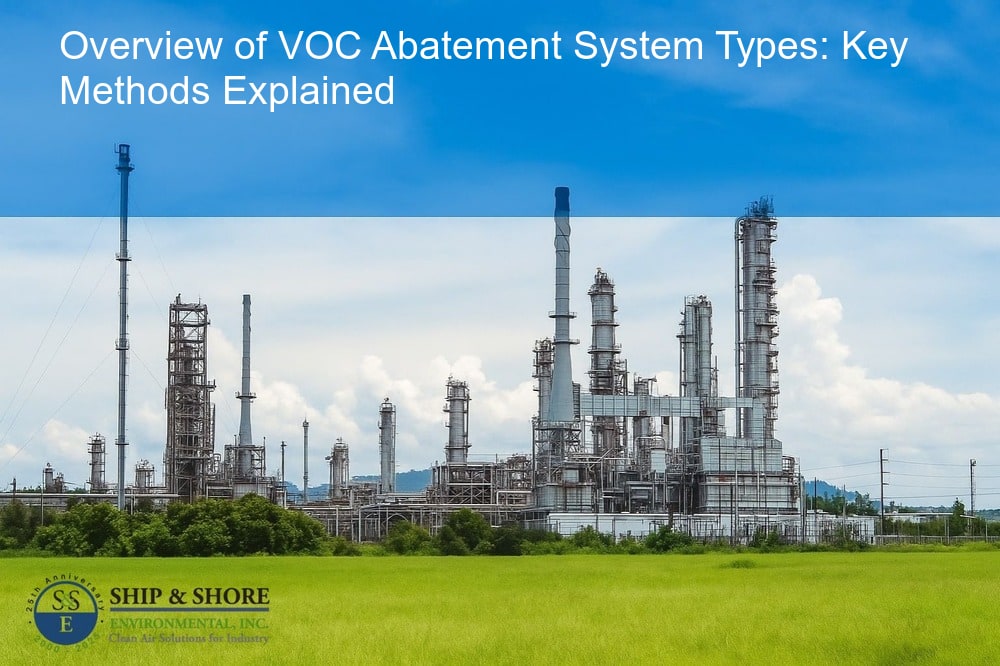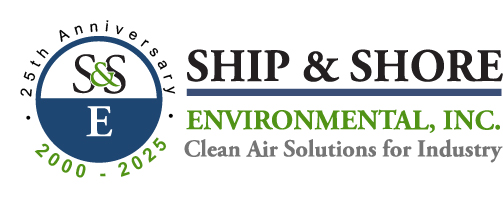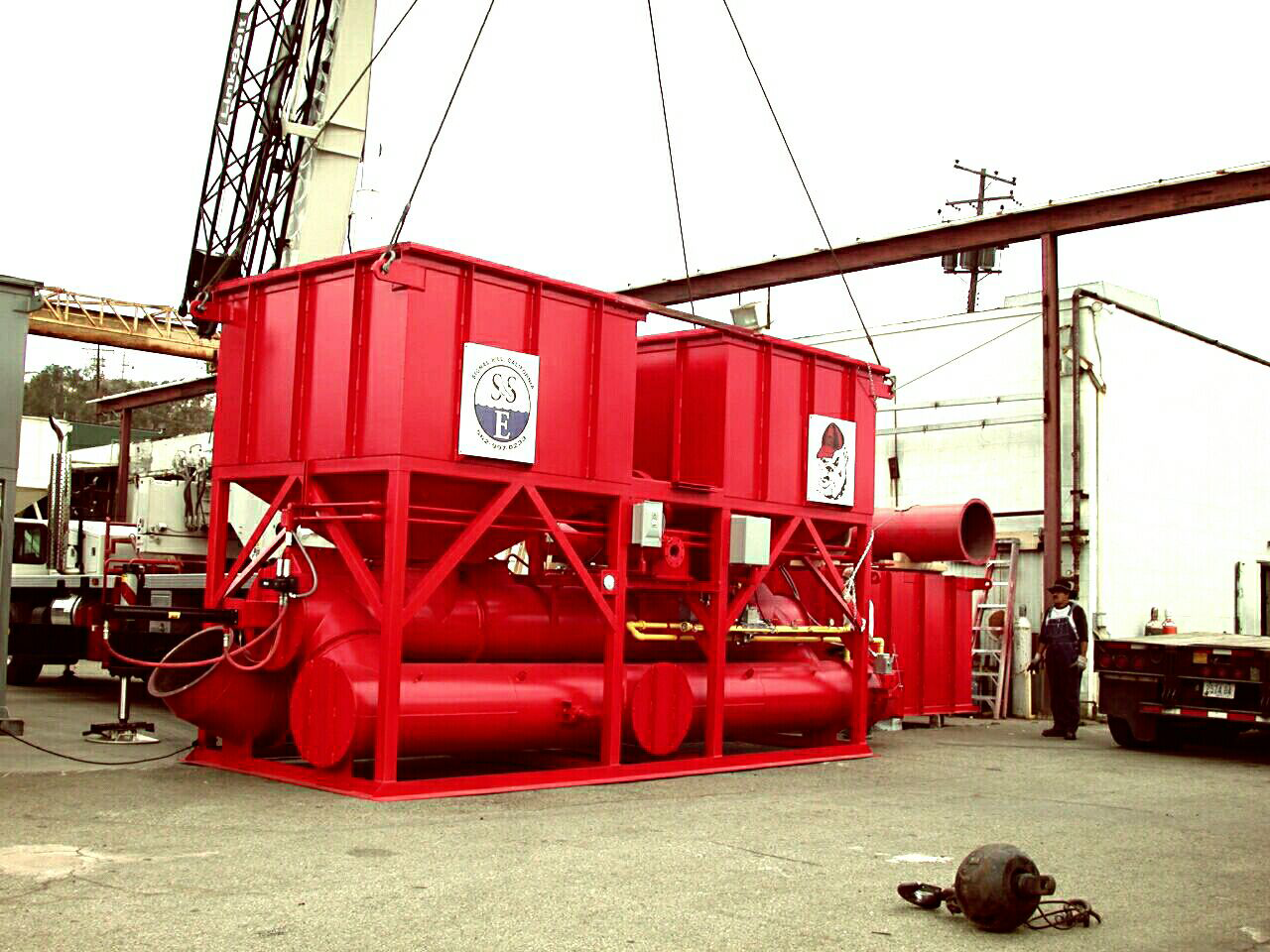
Comprehensive Overview of VOC Abatement System Types
October 8, 2025 8:20 amUnderstanding Volatile Organic Compounds (VOCs)
Overview of VOC abatement system types reveals a wide array of technologies designed to mitigate the harmful effects of volatile organic compounds (VOCs). VOCs are organic chemicals that have a high vapor pressure at room temperature. This leads to significant evaporative losses, resulting in their prevalence in the atmosphere. These compounds are found in products such as paints, varnishes, fuels, and even cleaning supplies. Due to their ability to evaporate easily, VOCs contribute to air pollution and pose serious health risks, such as respiratory problems and other chronic health conditions.
The Importance of Abating VOC Emissions
Abating VOC emissions is crucial for several reasons. Firstly, VOCs play a significant role in the formation of ground-level ozone and smog, which have detrimental effects on air quality, public health, and the environment. Long-term exposure to VOC emissions can lead to a variety of health issues, including headaches, dizziness, and in severe cases, damage to the liver, kidneys, and central nervous system. Furthermore, many VOCs are classified as carcinogens, making it imperative to control and reduce their emissions to protect public health.
From an environmental perspective, reducing VOC emissions helps in mitigating climate change and preserving ecosystems. VOCs can contribute to the degradation of the ozone layer, which protects life on Earth from the sun’s harmful ultraviolet radiation. By implementing effective VOC abatement strategies, we can ensure cleaner air, healthier communities, and a more sustainable future. Additionally, regulatory bodies worldwide have set strict guidelines and emission limits, making it necessary for industries to adopt appropriate VOC abatement systems to remain compliant and avoid penalties.
Preview of VOC Abatement System Types
To tackle the issue of VOC emissions, various abatement systems have been developed. Each system employs different technologies and methodologies to effectively capture and destroy VOCs before they can be released into the atmosphere. The selection of an appropriate VOC abatement system depends on factors such as the type and concentration of VOCs being emitted, operational requirements, and cost considerations.
In the forthcoming sections, we will provide an in-depth look at some of the most commonly used VOC abatement systems. We’ll explore the working principles, advantages, and ideal applications for each type. This comprehensive overview aims to equip you with the knowledge needed to select the best system to meet your specific VOC abatement needs. By understanding the strengths and limitations of various technologies, you can make informed decisions that enhance operational efficiency and environmental compliance.
Overview of VOC Abatement System Types: Regenerative Thermal Oxidizers
Regenerative Thermal Oxidizers (RTOs) are one of the most efficient solutions for VOC abatement. They work by oxidizing hazardous gases at high temperatures, effectively breaking down VOCs into CO2 and H2O. One of the key advantages of RTOs is their energy efficiency. The system utilizes a set of ceramic heat exchangers to transfer heat from the outgoing exhaust gases to the incoming ones, significantly reducing energy consumption. This not only lowers operational costs but also boosts environmental performance. Transitioning from conventional methods to RTOs can make a remarkable difference in VOC emission levels.
Catalytic Oxidizers: A Key Player in VOC Abatement
Catalytic Oxidizers are another vital component in the overview of VOC abatement system types. Unlike RTOs, Catalytic Oxidizers utilize a catalyst to facilitate the oxidation process at lower temperatures, typically between 500°F and 1,000°F. The lower temperature requirement results in decreased fuel usage, offering both cost savings and environmental benefits. Catalytic Oxidizers are especially effective for lower concentration VOC streams and are best suited for processes where heat-sensitive materials are involved. The catalytic element speeds up chemical reactions, ensuring efficient VOC removal with minimal energy input.
Specialized VOC Abatement Solutions: Soil Vapor Extraction & Others
While RTOs and Catalytic Oxidizers are highly effective for industrial applications, specialized solutions are sometimes required for unique situations. Soil Vapor Extraction (SVE) is one such specialized method designed to address VOCs in contaminated soils. SVE systems work by applying a vacuum to the soil to extract volatile compounds, which are then treated using appropriate abatement technologies. This method is particularly useful in remediation projects and brownfield developments.
Aside from SVE, there are other specialized VOC abatement solutions tailored to specific industries or contaminant types. For instance, Adsorption systems employ activated carbon or other media to capture VOCs from gas streams. Biofiltration uses biological organisms to degrade VOCs, providing an eco-friendly solution particularly useful in waste management and composting facilities. To summarize, the choice of a specialized VOC abatement system depends on multiple factors, including the nature of the contamination, required efficiency, and regulatory compliance.
- Regenerative Thermal Oxidizers (RTOs)
- Catalytic Oxidizers
- Soil Vapor Extraction (SVE)
- Adsorption Systems
- Biofiltration
In conclusion, the broad spectrum of VOC abatement solutions available provides flexibility to meet diverse industrial needs. By integrating the most suitable technology, we can ensure effective VOC reduction and compliance with environmental regulations.
Did you know that Regenerative Thermal Oxidizers can destroy over 95% of VOCs by using high-temperature combustion, making them highly effective for industrial emission control?
Choosing the right VOC Abatement System: Factors to Consider
When selecting the ideal VOC abatement system, it’s crucial to evaluate several key factors to ensure optimal performance and compliance. These considerations include the specific types of VOCs being emitted, the volume and concentration of emissions, operational costs, and the particular regulatory requirements pertinent to your region and industry. Understanding the Overview of VOC abatement system types allows us to tailor our solutions to meet the specified needs of each application. Whether the goal is to reduce operational costs or meet strict environmental regulations, a thorough assessment will lead to the most effective system choice.
Environmental Benefits and Regulatory Compliance: Impacts of VOC Abatement
The environmental benefits of an effective VOC abatement system extend far beyond just reducing emissions. Proper abatement technology improves air quality, ensuring that communities are safeguarded from harmful pollutants. Regulatory compliance is another significant advantage, as failing to meet VOC emission standards can result in severe penalties. By implementing advanced systems like regenerative oxidizers, we not only adhere to stringent environmental regulations but also contribute to a more sustainable future. These systems are designed to effectively destroy up to 99% of VOCs, minimizing both ecological and health risks.
Future Trends in VOC Abatement System Technologies
As industries continue to evolve, so too do the technologies designed to reduce VOC emissions. Future trends are pointing towards more energy-efficient solutions, integration of IoT for real-time monitoring, and the use of advanced materials that enhance operational longevity and effectiveness. Innovative approaches such as regenerative oxidizers are setting new benchmarks in efficiency and sustainability. Additionally, there is an increased focus on developing systems that can handle a broader range of VOC types with higher destruction efficiencies. Leveraging cutting-edge developments ensures that we stay ahead in providing top-of-the-line VOC abatement solutions, safeguarding the environment, and enhancing regulatory compliance for a better tomorrow.
FAQ
What factors should we consider when choosing a VOC abatement system?
In selecting an appropriate VOC abatement system, it’s vital to analyze the types of VOCs, volume and concentration of emissions, cost-efficiency, and the regulatory requirements specific to your location and sector. Additionally, considerations should be given to energy consumption, maintenance needs, and the potential for future scalability. Each factor plays an integral role in ensuring the system’s effectiveness and its alignment with our operational and environmental goals. Therefore, we provide a tailored approach to VOC abatement systems for our clients, ensuring that their selection aligns with their unique requirements.
How does VOC abatement contribute to environmental protection and regulatory compliance?
Our VOC abatement systems play a pivotal role in safeguarding air quality and ensuring public health. By removing up to 99% of VOC emissions, our technologies reduce the presence of hazardous pollutants in the atmosphere. Furthermore, compliance with environmental standards is crucial; without adherence to these regulations, businesses may face significant penalties. Thus, our abatement solutions not only mitigate environmental impacts but also help clients avoid legal implications and maintain operational legitimacy.
What are the future trends in VOC abatement system technology?
We foresee the advancement of energy-efficient VOC abatement systems, with a focus on integrating real-time monitoring through IoT and utilizing robust new materials. As we embrace these trends, our clients benefit from greater efficiency and more comprehensive handling of a diverse array of VOC emissions. Subsequently, our commitment to innovation places us at the forefront of offering forward-thinking and sustainable solutions.
What technologies do we offer for specialized VOC abatement?
Our specialized VOC abatement solutions include soil vapor extraction systems among others. These technologies are designed to target and extract VOCs from sub-surface environments, making them ideal for remediation projects. Always attuned to our clients’ specific needs, we explore a variety of advanced systems to ensure we provide the most effective abatement technology for any specialized application.
Can we offer VOC abatement systems that are customized to specific industry needs?
Yes, we specialize in providing customized VOC abatement solutions tailored to the unique requirements of various industries. Our expertise enables us to adjust system configurations, such as opting for catalytic oxidizers for industries needing lower operating temperatures. Likewise, we can also scale systems to handle high-volume emissions or incorporate additional features like heat recovery for enhanced efficiency. By understanding the diverse demands across industries, we ensure our systems are precisely matched to the operational needs of our clients.
Categorised in: Blog

